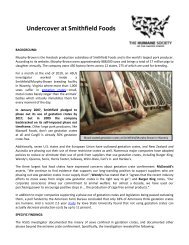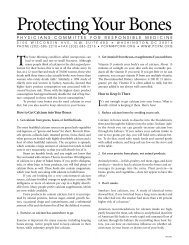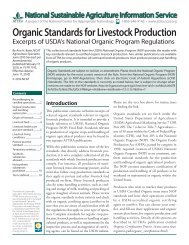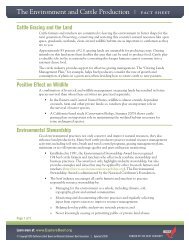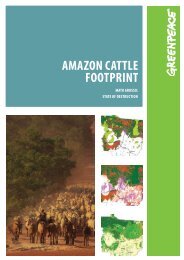THE MYTHS OF VEGETARIANISM Stephen Byrnes, PhD
THE MYTHS OF VEGETARIANISM Stephen Byrnes, PhD
THE MYTHS OF VEGETARIANISM Stephen Byrnes, PhD
Create successful ePaper yourself
Turn your PDF publications into a flip-book with our unique Google optimized e-Paper software.
mule deer, and llama (93). "Mammoth, sloth, mountain sheep, bison, and beaver are fattyanimals in the modern sense in that they have a thick layer of subcutaneous fat, as do the manyspecies of bear and wild pig whose remains have been found at Paleolithic sites throughout theworld." (94) Analysis of many types of fat in game animals like antelope, bison, caribou, dog, elk,moose, seal, and mountain sheep shows that they are rich in saturates and monounsaturates,but relatively low in polyunstaurates. (95)Further, while buffalo and game animals may have lean, non-marbled muscle meats, it is amistake to assume that only these parts were eaten by hunter-gatherer groups like the NativeAmericans who often hunted animals selectively for their fat and fatty organs as the followingsection will show.Anthropologists/explorers such as Vilhjalmur Stefansson reported that the Innuit and NorthAmerican Indian tribes would worry when their catches of caribou were too lean: they knewsickness would follow if they did not consume enough fat (96). In other words, these primitivepeoples did not like having to eat lean meat.Northern Canadian Indians would also deliberately hunt older male caribou and elk, for theseanimals carried a 50-pound slab of back fat on them which the Indians would eat with relish. This“back fat” is highly saturated. Native Americans would also refrain from hunting bison in thespringtime (when the animals' fat stores were low, due to scarce food supply during the winter),preferring to hunt, kill and consume them in the fall when they were fattened up (97).Explorer Samuel Hearne, writing in 1768, described how the Native American tribes he came incontact with would selectively hunt caribou just for the fatty parts:"On the twenty-second of July, we met several strangers, whom we joined in pursuit of thecaribou, which were at this time so plentiful that we got everyday a sufficient number for oursupport, and indeed too frequently killed several merely for the tongues, marrow, and fat." (98)While Cordain and Eaton are certainly correct in saying that our ancestors ate meat, theircontentions about fat intake, as well as the type of fat consumed, are simply incorrect.While various vegetarian and vegan authorities like to think that we evolved as a species on avegan or vegetarian diet, there exists little from the realm of nutritional anthropology to supportthese ideas.To begin with, in his journeys, Dr Price never once found a totally vegetarian culture. It shouldbe remembered that Dr. Price visited and investigated several population groups who were, forall intents and purposes, the 20th century equivalents of our hunter-gatherer ancestors. Dr. Pricewas on the lookout for a vegetarian culture, but he came up empty. Price stated:"As yet I have not found a single group of primitive racial stock which was building andmaintaining excellent bodies by living entirely on plant foods." (99)Anthropological data support this: throughout the globe, all societies show a preference foranimal foods and fats and our ancestors only turned to large scale farming when they had to dueto increased population pressures (100). Abrams and other authorities have shown thatprehistoric man's quest for more animal foods was what spurred his expansion over the Earth,and that he apparently hunted certain species to extinction. (101)





